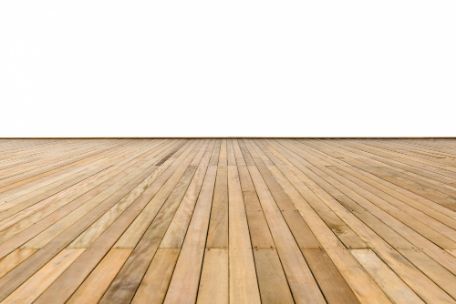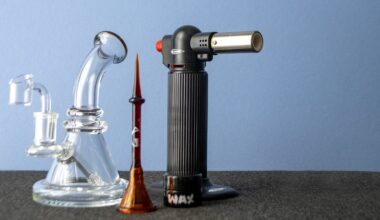Table of Contents Show
Discover the best yoga mat thickness for hardwood floors to optimize comfort and stability. Dive into our guide for expert recommendations, top brands, and care tips for a serene practice.
“Life is a balance between what we can control and what we cannot. I am learning to live between effort and surrender.” – Danielle Orner
Disclosure: As an Amazon Associate I earn from qualifying purchases.
Yoga is the embodiment of balance – not just in terms of poses, but in finding harmony between the body, mind, and spirit. Yet, for many yoga enthusiasts, there’s a real-life balancing act taking place, often on their lovely hardwood floors. “What’s the best yoga mat thickness for hardwood floors?” many a yogi has wondered aloud. If you’re nodding in agreement, then this one’s for you.
The Past and Progress of Yoga Mats
Decades ago, people didn’t even have the luxury of debating the best yoga mat thickness for hardwood floors. Angela Farmer, a revered yoga teacher, once regaled the community with tales of her struggles on slippery grounds. Picture this: yoga practitioners using blankets, foam mattresses, and even the humorous (and slightly gross) tactic of spitting on footsoles just for grip! Talk about commitment! 😅
Fast forward to Angela’s trip to Germany, where she stumbled upon a carpet padding that promised the grip potential yogis yearned for. This serendipitous discovery paved the way for the “Original Molivos Mat”. Later innovations led to the durable “Tapas Mat” and the beloved “Black Mat”, a favorite among flow-style yogis[1]. With this rich history in mind, it’s evident that the best yoga mat thickness for hardwood floors is a concept rooted in decades of innovation.
Now, how does this tie back to our hardwood conundrum? Well, the advent of specialized mats indicated the importance of pairing your yoga style with the right mat type and thickness. Ashtanga aficionados, for example, gravitate towards 4mm mats. This medium-thick mat works wonders on both carpet and hardwood floors, granting the practitioner ample stability without compromising on the connection to the floor[1]. Hence, the argument stands strong: for hardwood surfaces, a medium-thick mat is probably your best bet. But why?
The Puzzling Tale of Yoga on Hardwood
Let’s picture a serene yoga session on a hardwood floor – a scenario many of us are familiar with, given the increasing popularity of hardwood flooring in modern homes. Now, as aesthetically pleasing as it is, hardwood can be pretty unforgiving for intense yoga sessions. Enter the discussion on the best yoga mat thickness for hardwood floors.
Hardwood, with its smooth, polished surface, requires a mat that can offer grip, stability, and a good level of cushioning. Too thin a mat, and you might feel every grain and imperfection of the wood, turning your peaceful Shavasana into a cringe-worthy experience. On the flip side, go too thick, and you risk feeling wobbly, especially during standing poses or balance-focused asanas.
The “Black Mat”, favored by those practicing flow yoga styles, and medium-thick mats suitable for both carpet and wood floors, underline the point. They manage to strike a harmonious balance – enough cushioning to protect your joints and prevent any inadvertent dents on the hardwood while providing stability and that much-needed connection to the ground beneath you[1].
But wait, what if you’re an enthusiastic yogi who likes to occasionally mix things up with more high-impact exercises or has a penchant for moving furniture around in the quest for the perfect yoga space? Fear not, foam puzzle mats come to the rescue! Providing a protective layer between your vigorous routines (or furniture legs) and the hardwood floor, these mats offer noise reduction, protection, and that extra layer of cushioning for your adventurous yoga endeavors[3].
In conclusion, when you’re standing at the crossroads (or in the store aisle) wondering about the best yoga mat thickness for hardwood floors, remember the Goldilocks principle. Not too thin, not too thick – just right. And in the world of yoga mats, that “just right” seems to be around the medium-thick mark, approximately 4mm.
Material Matters: Beyond Thickness
While the best yoga mat thickness for hardwood floors might be around the medium-thick range, it’s essential to understand that thickness isn’t the only determining factor for an optimal yoga experience. Material matters, and it can significantly impact grip, comfort, and durability.
Rubber vs. TPE vs. PVC
Three of the most popular materials used for yoga mats are natural rubber, TPE (Thermoplastic Elastomers), and PVC (Polyvinyl Chloride).
- Natural Rubber: This material is eco-friendly, made from the sap of rubber trees. A rubber mat often provides excellent grip, even in sweaty conditions, making it a popular choice for those practicing hot yoga. If you’re looking for the best yoga mat thickness for hardwood floors and are environmentally conscious, rubber mats around the 4mm mark could be your go-to.
- TPE: A more modern material, TPE mats are usually UV-resistant, lightweight, and come in varying thickness levels. While they can offer decent grip and cushioning, their longevity can sometimes be questionable, especially when frequently exposed to sweat and moisture.
- PVC: Famously durable, PVC mats can last for years. They provide a sticky surface, which is great for grip, but they’re not biodegradable. If you prioritize durability over eco-friendliness and are looking for the best yoga mat thickness for hardwood floors, PVC mats in the medium-thick range are a solid choice.
Special Considerations: Personal Needs and Aesthetic Appeal
Beyond the realm of material and thickness, personal preferences come into play. Perhaps you suffer from joint pain or are rehabilitating an injury – in such cases, you might require a thicker mat, even on hardwood floors, to provide extra cushioning.
Conversely, if you’re an experienced yogi seeking to perfect your balance and poses, a thinner mat might be more appealing, even on hardwood. The connection to the ground can be more palpable, offering better feedback during practice.
And let’s not forget aesthetics! With the rise of social media, many individuals love to capture their yoga journeys in photos and videos. The color, design, and overall look of your mat can play a significant role in your choice. Fortunately, manufacturers have tuned into this trend, offering a plethora of designs ranging from minimalist to intricate patterns.
Brand Recommendations: Trustworthy and Top-Rated for Best Yoga Mat Thickness for Hardwood Floors
When seeking the best yoga mat thickness for hardwood floors, it might be helpful to start with some top-rated brands known for producing high-quality mats.
- Manduka: This brand is renowned for its PRO Yoga Mat, which is both dense and cushioned. With a lifetime guarantee, their mats provide excellent support, especially on hardwood floors. Opt for their medium-thick offerings if you’re prioritizing cushioning without compromising stability.
- Gaiam: A popular choice among yogis, Gaiam offers mats in a variety of thicknesses and designs. Their 5mm mats strike a balance between plush comfort and grounded stability, making them a fitting option for hardwood floors.
- Liforme: Known for its alignment markers, Liforme’s mats are eco-friendly and boast a strong grip. Their standard mat offers a thickness that’s apt for hardwood floors, ensuring comfort without losing the sense of connection to the ground.
Maintenance and Care: Prolonging the Life of Your Mat
Once you’ve chosen the best yoga mat thickness for hardwood floors, you’ll want to ensure it stands the test of time. Here are some maintenance and care tips:
- Regular Cleaning: Depending on your yoga routine’s intensity, consider wiping down your mat after every session using a mix of water and a few drops of mild detergent or essential oils. There are also ready-made yoga mat sprays available.
- Air Dry: After cleaning, roll out your mat and let it air dry. Avoid direct sunlight as it can degrade certain materials over time.
- Rotate: Just as you’d rotate a mattress or tires on a car, consider rotating your yoga mat every so often. This ensures even wear, particularly if you tend to practice the same poses regularly.
- Store Properly: When not in use, roll up your mat with the practice side out to maintain its shape. Store it in a cool, dry place.
You May Also Like: Can Yoga Mat Damage Hardwood Floors? and 3 Other Essential Flooring Mysteries
Conclusion
When embarking on the journey to find the best yoga mat thickness for hardwood floors, remember that it’s a blend of practicality, personal preferences, and a touch of aesthetics. While the 4mm medium-thick mat might be the general recommendation, the final choice rests on what feels right for you. After all, yoga is about connection – to oneself, to the environment, and to the ground beneath. Ensure your mat aids that connection, rather than hindering it. Namaste!
Frequently Asked Questions
Q1. Can I use an extra-thin mat for traveling on hardwood floors?
While ultra-thin mats are super convenient for travel, they might not offer enough cushioning for a full session on hardwood floors.
Q2. Are there any innovative mats suitable for hardwood floors?
Yes! The “Yoga Map Mat” by Helen Howlett Campanella offers alignment cues and a design for progress tracking[1]. Ensure you pair it with another protective layer to safeguard your hardwood floors.
Q3. I’ve heard of “Black Mats” favored by flow-style yogis. Are they suitable for hardwood floors?
Absolutely! The “Black Mat” is durable and provides stability, which can make it a good choice for hardwood floors[1].
Q4. Do all yoga mats provide enough grip for hardwood floors?
Not necessarily. Ensure your mat is non-slip, especially when used on smooth surfaces like hardwood.
Q5. Can I use props with my yoga mat on hardwood floors?
Of course! Just ensure the props (like blocks and straps) are used correctly and don’t scratch or damage the floor.



